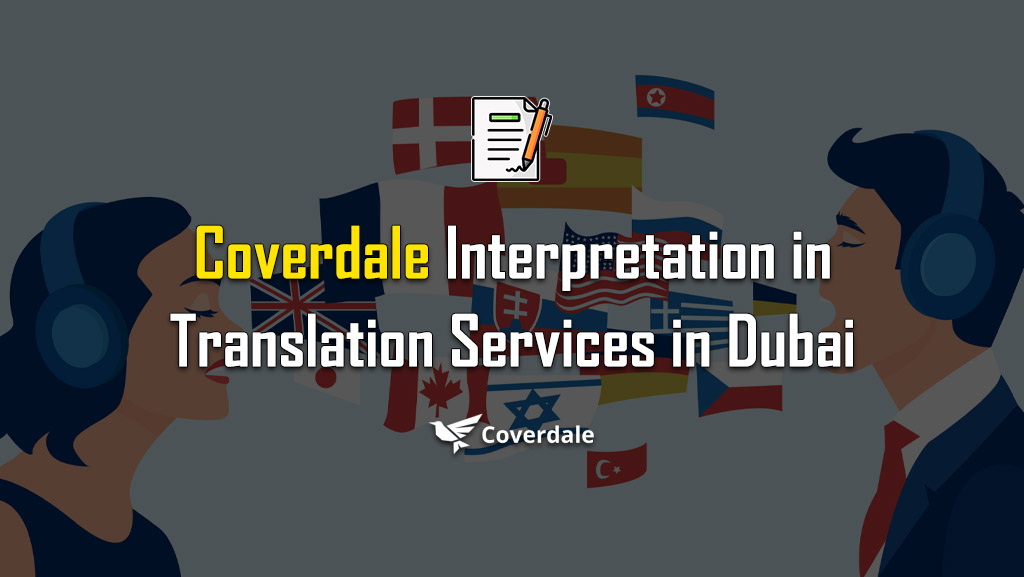Jobs around the world today need a professional translator and interpreter. Why? Due to the need for continuous and multinational communication. So Interpretation in translation services are provided in different languages with a variety of techniques.
To be successful globally, your business must be able to connect with an international audience like a local company. Although many people are in favor of specialized translation, there are still those who do not know the difference between interpretation and translation.
To compete and succeed in the global market as well as resonating your content in the native language of the market, you may need translation or interpretation, or both. The problem is that different companies still do not know which one need to carry out their international operations? How do you know which one you need?
In this article, Coverdale will introduce a summary of different types of interpretation in translation services that are worth reading. We also tried to examine the key differences between the two. At the end of this article, you will find out which one will bring better results for your company.
[lwptoc]Differences between interpretation and translation
Interpretation and translation are two related language disciplines. While these terms often used interchangeably, it is important to understand the distinction between these highly related language areas when choosing the service you need.
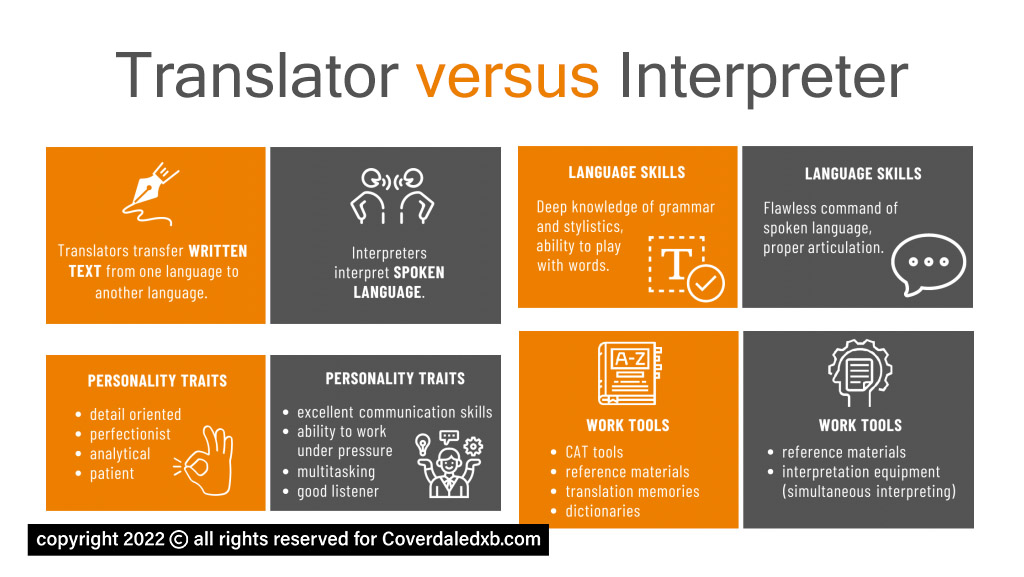
Difference between translation and interpretation
However, doing any of these things should be left to the specialist. People who do editing and interpreting work are often called translators, which may not be appropriate for their work.
There are key differences between interpretation and translation in the skill set of each service. The difference between the two can be seen in skills, training, competence and even language skills that few people can do both at a professional level.
Interpretation is a service that takes place in the moment. Interpretation is a direct delivery that provided simultaneously and without coordination or immediately after the main talk and without the help of scripts, dictionaries, or other reference material.
Interpretation vs translation
Professional commentators must convey the source language in the text, and retain its original meaning, but translate terms, conversations, and other culturally specific references in ways that the audience can understand. The only resources of an interpreter are experience, good memory and fast reflexes.
Interpreters work on live translation projects such as conferences and meetings, medical appointments, etc. Translators translate any information in writing, including websites, prints, video subtitles, software, multimedia. Live, sign language work.
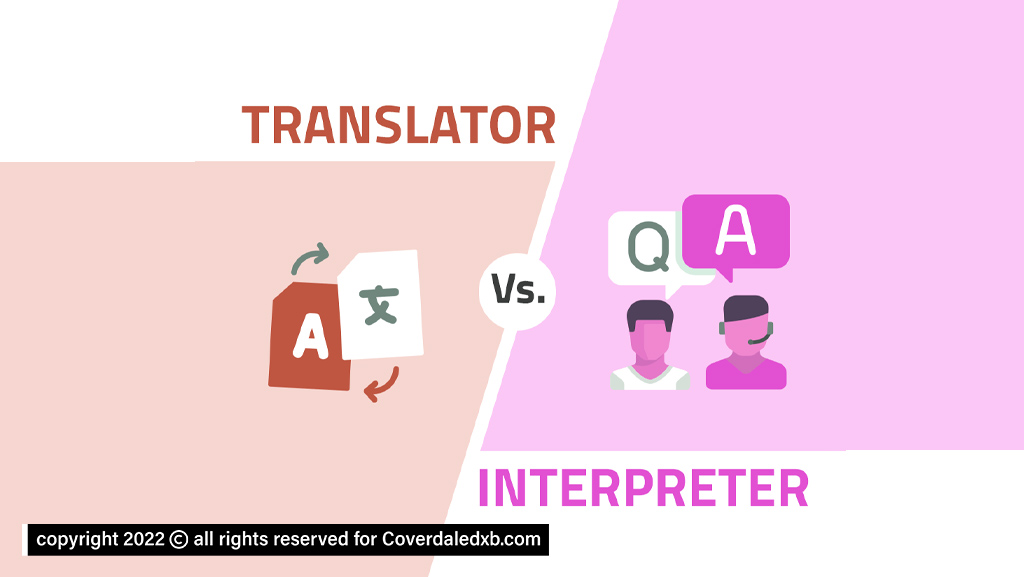
Which is better translation or interpretation?
Perhaps the biggest difference between interpreters and translators is that most professional translators use computer tools in their work. This includes converting source content to an easy-to-use file type (usually RTF), using a translation memory (TM) to text for automatic translation, and filling in gaps from scratch.
As the translator translates every part of the text, they may refer to dictionaries and translation style guide templates to ensure quality. Finally, they transfer the translation to another linguist for correction, and then convert the final written document to its original format to ensure the closest possible match. In summary:
While translation services are text-based, interpretation controls spoken language in real time. Interpretation is instantaneous. This process can be done in person, by phone or via video.
Interpreters translate spoken language orally, while translators translate written word. Both require deep cultural and linguistic understanding, specialized knowledge of the subject, and the ability to communicate clearly.
On the other hand, translation can take place long after the source text creation. This gives translators ample opportunity to use reference technologies and materials to produce accurate, high-quality translations.
The following are the key features of a good Interpretation in translation services.
Specifications of the technical skills of the translator and interpreter
The differences in the skills of the translator and the interpreter are certainly greater than their similarities. The key skills of a translator are the ability to understand the language and culture of the country translating the text. And then, using a suitable source of dictionaries and reference materials, it presents these contents in the target language clearly and accurately. In other words, while language and culture skills are still vital, the most important sign of a good translator is the ability to write in the target language, that is, to translate an article.
Simultaneous translators also need to process and memorize words in the moment. Interpreters must also have excellent public speaking skills and intellectual ability to instantly translate terms, expressions and other culturally specific references into similar phrases that the target audience understands.
What features and skills should a commentator or interpreter have?
A translator or interpreter can not translate or interpret anything without mastering the target language. Excellent commentators have the following skills:
- Full knowledge of the general subject to be interpreted
- Familiarity with both destination and origin cultures
- Extensive lexical range in both languages
- Ability to express thoughts clearly and concisely in both languages
- Excellent note-taking techniques for sequential texts
- At least 2-3 years of work experience for simultaneous translation and interpretation
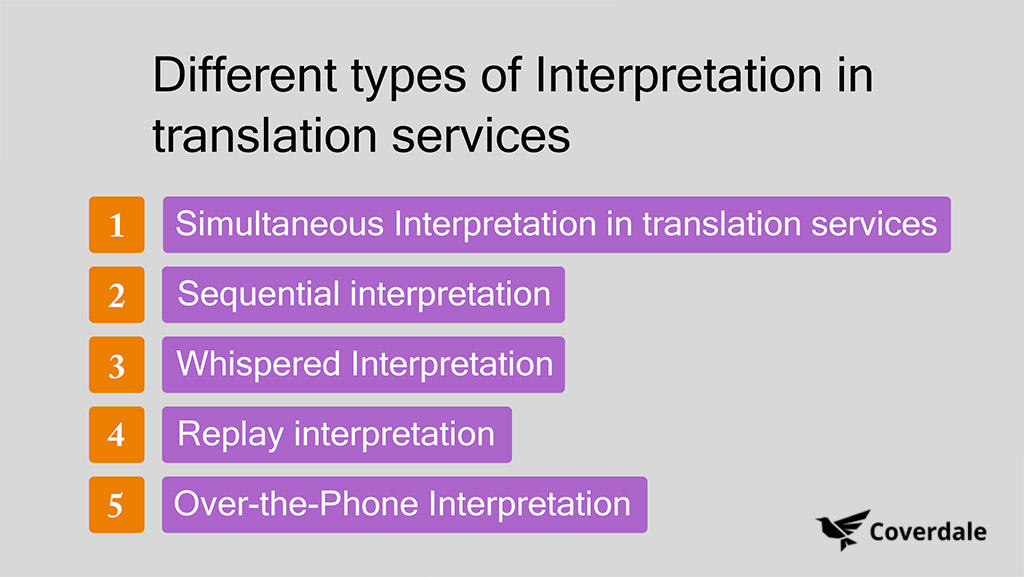
Different types of Interpretation in translation services
1- Simultaneous Interpretation in translation services
One of the most common and well-known types of interpretations in the business world is translation or simultaneous interpretation. In simultaneous interpretation, the interpreter translates speaker’s speech in real time into the target language.
If we want to name an concrete example, simultaneous translators usually attend international conferences. They announce their readiness as soon as the sessions start. Now suppose that the speaker of the meeting goes on stage and speaks in his/her native language.
At the same time, a simultaneous translator or interpreter will usually translate the speaker’s words in isolated rooms using the complete equipment at their disposal.
Simultaneous interpretation is useful when real-time conversion of a source language to a target language required. This is very demanding and very welcomed by different people.
The key to success in this type of translation and interpretation will be that the translator and interpreter must listen carefully to the speaker’s words and translate and interpret them at the same time. Because when the speaker starts speaking, he does not interrupt or correct his speech in any way because of the translator.
These professional translators must have sufficient experience and expertise and be thinkers with high decision speed.
2- Sequential interpretation
Another common type of translation and interpretation service is sequential interpretation. In this way, the translator and interpreter, after hearing two or more sentences from the speaker, will quickly translate it for his/her audience. Therefore, in this case, the speaker should have a break in his/her speech so that the translator can convey the meanings to the audience in a concise and useful way.
Sequential interpretation used in meetings, from conversations between two people to discussions between a group. Consecutive translation and interpretation considered an important process in today’s business, so it is very important to use these translators as consultants.
This type of Interpretation in translation services can be done both in person and in absentia through video conferencing or simultaneous telephone translation.
It should be noted that this method, especially at the time of the epidemic of Covid 19, caused a significant increase in demand for the provision of consecutive remote Interpretation in translation services in the first half of 2020.
3- Whispered Interpretation
This is probably the first time you have heard the term Whispered Interpretation. This type of interpretation is different from the previous two cases, ie simultaneous and consecutive. In this type of interpretation, only the translator translates simultaneously for one or two listeners.
These type of Interpretation in translation services are suitable for meetings or events that have a small number of listeners, so the translator can transfer the material to these people in complete peace.
4- Replay interpretation
This title may be unfamiliar to you! It is interesting to know that another type of Interpretation in translation services is replay interpretation. This interpretation is such that a translator first and simultaneously translates the speaker’s words. Then the second translator translates the words of the first translator to the rest of the audience. To better understand this, let’s mention a few examples:
- Simultaneous playback interpretation
This technique used in international and multilingual conferences that require translation into several languages. Suppose the conference is in German but the audience is fluent in English, Spanish, etc. In this way, the first translator simultaneously translates German into English, for example, The other translators translate from English to other languages.
- companion interpretation
Many countries use this practice as a companion to many officials or political figures. In this way, when the translator is visiting a place with the relevant official, if necessary, he participates in commercial and economic transactions, etc., as an accompanying delegation. Translators of other politicians are also present in those meetings in different languages. In this case, interface or companion interpretation in translation services occur in these places.
- Simultaneous interpreter on the journey
Simultaneous travel interpreter also commonly known as travel escort interpretation. The duties of concurrent translators in these cases include a wide range of services, including attending dinners, business and leisure trips, or participating in cultural programs and conferences.
From the translators’ point of view, this section can be very exciting, if in addition to these services, the translator will be paid a fee.
5- Over-the-Phone Interpretation
Over-the-Phone Interpretation is exactly what its title implies. This technique is a way to provide remote translation services over the telephone or video conferencing.
Understandably, the demand for simultaneous telephone translation at the time of the COVID-19 virus outbreak in 2020 increased the demand for this type of interpretation in translation services.
A simultaneous telephone interpreter must be very skilled and fast in listening over the phone. Because this is only possible through audio and there will be no face-to-face communication in it.
On the other hand, many businesses make good use of this opportunity in order to save time and money. The OPI method, or Over-the-Phone Interpretation, is an ideal method for business conversations used in different countries.
The cost of long-distance telephone interpretation can be very attractive from a business perspective because companies no longer need to pay for a translator’s trip abroad.
The cost of long-distance telephone interpretation can be very attractive from a business perspective. Because companies no longer need to pay for a translator’s trip abroad.
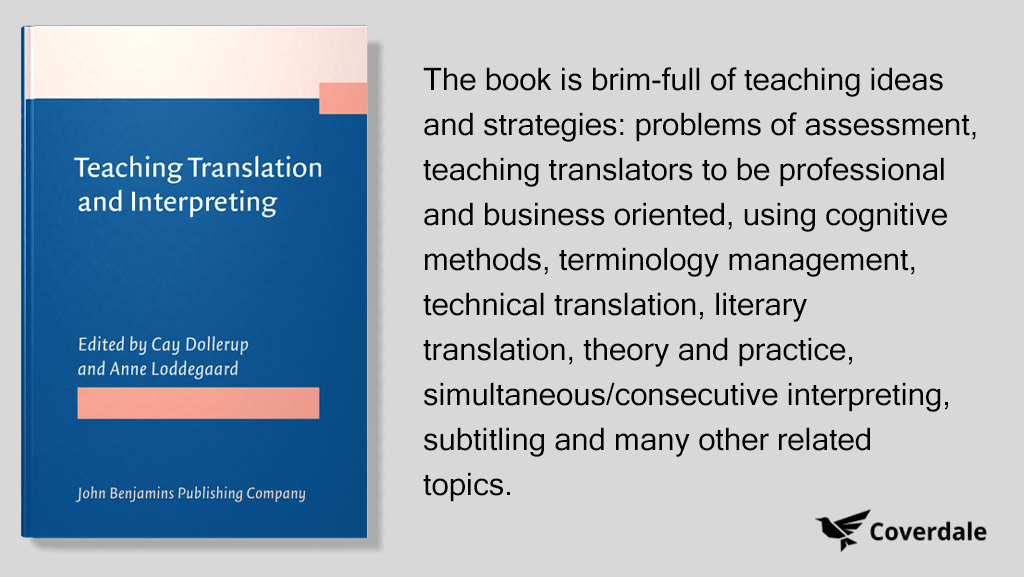
Teaching Translation and Interpreting book
Concluding Remarks
Jobs related to language, translation, interpretation, teaching, etc. are available in accordance with the expertise of teachers, translators and interpreters. A skilled and professional interpreter should be able to support at least one area of expertise.
We mentioned some differences between translator and interpreter above. It should be noted, however, that another difference between a translator and a translator is the length of time they take to complete the task. For example, a translator can translate 2,000 to 3,000 words a day. While an interpreter has to work on about 150 words per minute.
Apart from the above, translators often work for a long time translating a text, while interpreters often work as a team and do not spend much time doing a task.
Coverdale has experienced and specialized translators and interpreters in Dubai. They provide types of interpretation in translation services as well as a variety of translation services in interpreting and translating into different languages.
If you need a professional translator, Coverdale’s professional team uses expert editors along with their translators and interpreters. Contact us and make sure you find a good translation agency.
